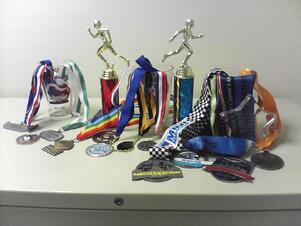I had a great conversation with one of you Warriors
Warriors
about the fact that challenges of “change” are not found only in the kitchen and in the gym. A huge challenge can come from your social circle, friends and family. It’s a common issue with recovering alcoholics, when their so-called friends liked them better when they were a drunk. The same dynamic can happen to someone who is trying to lose weight and be strong, fit, healthy and happy. Unfortunately, some people in your inner circle can be big players in sabotaging your success (cue the Beastie Boys).
Why Your Friends Might Not Want You to Be Healthy
There are many reasons why someone might take this stance and aid in your backslide into unhealthy behaviors. I think the biggest one is that they are not happy with themselves, and it hurts them to see someone improve, so they react negatively to your improvement. Maybe it’s a quick insult, or they minimize what you have accomplished simply to bring you back down to where they are and how they feel.
My recommendations here are limited because there is just one: Build a better inner circle! Be involved with likeminded people and ditch those who are not. This may sound harsh, but consider it happy or unhappy, healthy or diseased, life or death.
The Drawbacks of Being Seen as a Fitness Expert
Another challenge of success is that now everybody considers you to be the expert, and all they wish to talk about is nutrition and exercise. Some people relish this. If that is you, fantastic. Inspire millions. For some, it is a battle everyday to stay focused and on track, and discussing it all the time could bring some pretty emotional stuff to the forefront that could result in some negative behavior.
I feel that, like everything else, this has to be in balance. It’s great that family and friends see you as someone who can help, but if your improvement plan is still in progress, you may not be in the place to offer advice and solutions over and over again without some backlash. If you are that person who has reached the point of feeling comfortable talking to others about your progress and the steps that got you there, you have to keep your focus on others in balance with the focus on yourself.
How to Deal with People Who Want Fitness Advice
My wife, a professional massage therapist, had a very good way to deter people from constantly talking about aches and pains. When someone would mention what the ailment was (after finding out that she was a therapist), she would simply say “I would see someone about that.” That was her way of balancing the conversation. Here are a few ways to help you balance your conversations:
- Say “Thank you for noticing all of my hard work. What have you done today to better yourself?”
- Change the subject.
- Remove yourself from a conversation that makes you uncomfortable.
- Be choosy about the events you attend.
- Have a support system in place.
- Journal.
- Give them my card (just kidding, but I do have extras).
Be safe out there and keep a lookout for the sabotage. It could be closer than you think.
This blog was written by Tony Maloney, ACSM Certified Exercise Physiologist and Health Fitness Instructor. To find out more about the NIFS bloggers, click here.









 "Rome wasn’t built in a day.” An obvious observation that can transcend most of life’s challenges, I heard that somewhere. So, would that rule make any exceptions for your fitness goals? For “new to fitness” individuals, a major obstacle they must overcome is the reality that instant results are almost impossible to attain and that it takes a little more than six minutes of ab work to be ready for spring break (or your wedding, reunion, etc.).
"Rome wasn’t built in a day.” An obvious observation that can transcend most of life’s challenges, I heard that somewhere. So, would that rule make any exceptions for your fitness goals? For “new to fitness” individuals, a major obstacle they must overcome is the reality that instant results are almost impossible to attain and that it takes a little more than six minutes of ab work to be ready for spring break (or your wedding, reunion, etc.).